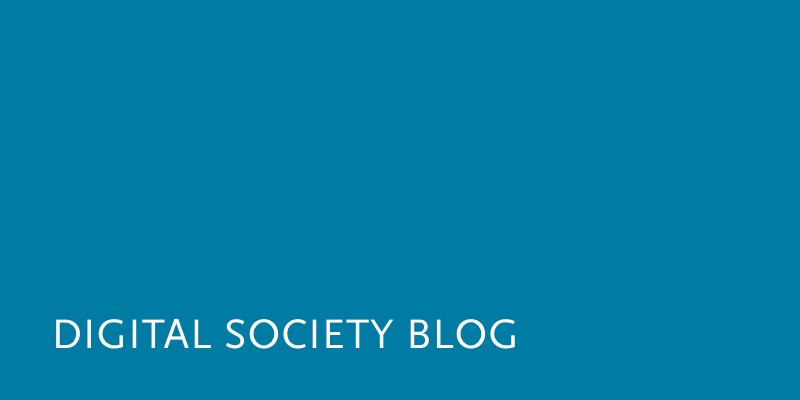Unsere vernetzte Welt verstehen

Die Netzwerker-Community hat ein Hashtag-Problem. Lasst es uns lösen!
Expertengruppen aller Art kommunizieren über Twitter, indem sie ein bestimmtes Hashtag nutzen. Datenjournalisten etwa verwenden #ddj (data driven journalism), Geoinformatiker versammeln sich um #gis (geo information system), und Bildungsexperten diskutieren via #oer (open educational resources) über Lehrmaterial, das unter freien Lizenzen steht. Nur die Netzwerker-Community hat kein handliches Hashtag – entgegen aller Vermutung! In dem Beitrag erkläre ich, warum ausgerechnet den Konstrukteuren des Internets ein funktionierendes Hashtag fehlt, und schlage eine Lösung vor.
Let me start off with a disclaimer: I am not a neutral bystander to the issue that this blogpost is about. I do research about the social glue that holds the internet together. I analyse how internet engineers manufacture internet connectivity, how they solve network problems, sometimes like firefighters, and also how they handle the disputes that occasionally lead to shutting down connections with other networks. So I have an interest in understanding the global community of networkers and how they communicate.
This blogpost is about non-communication. All kinds of professional groups use hashtags to have semi-public conversations on social media. Data journalists across the world communicate around #ddj (data driven journalism). Professionals for spatial analysis follow #gis(geo information system). Search for #oer and you will find a community of people who care about open educational resources. But where do you find the chatter about internet interconnection on Twitter, Facebook or Instagram? #Internetinterconnection? – Search harder. Out of all professional communities, the networker community is the last you would assume to lack a handy hashtag. But it’s true: the ones who have the longest track record of social networking on the internet – precisely because they created it! – they do not have a (functional) hashtag that works in today’s social media environment.
To be fair, this is a story of bad luck. Because in fact, the networker community does have a hashtag. This hashtag predates most social media platforms. It is #ix. #Ix for internet exchange – beautiful from an engineering point of view, because it is so short and efficient. The less you waste on metadata, the more you have for the payload. However, with the uptake of social media, this hashtag has become useless on general platforms. Search for #ix on Twitter and all you find is noise. #Ix is not unique enough. In the hashtag game networkers share the experience of early adopters: you benefit from features before anybody else does, but what you invested in is seldom compatible with future technical environments.
But, you may argue, perhaps networkers simply do not use Twitter or Facebook. Or they do not have common things to talk about. Ultimately, if there were a demand, there would be a hashtag, wouldn’t there? Is this blogpost the musings of a researcher in search of a problem? Well, it is true that internet interconnection professionals communicate through all sorts of communication channels – from email lists to IRC. But you can be sure that networkers use Facebook and Twitter as well. On this Twitter list for example, I compiled profiles of people who deal with internet interconnection
So where do we go from here? In order for a hashtag to work, it needs to be short, memorable and distinctive. And the right people need to use it. Here are my suggestions:
- #poundix – When you hear networkers talk about their hashtag, this is what they will say. Probably the most intuitive for long-time networkers.
- #ixchat – This hashtag literally performs its purpose: to create a common conversation around internet interconnection.
- #ixinfo – Similar to the hashtag above with emphasis on sending out info.
- #ix1992 – 1992 is the year when the first internet exchanges as we know them today started operations, think of MAE-East.
If you want to help solve the interconnection community’s hashtag problem, all you have to do is this: vote for your favourite hashtag here on Twitter and retweet the poll with your favourite hashtag. Also, feel free to add and discuss other suggestions in the comments. If things go well, a new hashtag will be born.
Foto: User: nina_pic / Flickr, CC BY-NC 2.0
Dieser Beitrag ist Teil der regelmäßig erscheinenden Blogartikel der Doktoranden des Alexander von Humboldt Institut für Internet und Gesellschaft. Er spiegelt weder notwendigerweise noch ausschließlich die Meinung des Institutes wieder. Für mehr Informationen zu den Inhalten dieser Beiträge und den assoziierten Forschungsprojekten kontaktieren Sie bitte info@hiig.de.
Dieser Beitrag spiegelt die Meinung der Autorinnen und Autoren und weder notwendigerweise noch ausschließlich die Meinung des Institutes wider. Für mehr Informationen zu den Inhalten dieser Beiträge und den assoziierten Forschungsprojekten kontaktieren Sie bitte info@hiig.de
Forschungsthemen im Fokus
HIIG Monthly Digest
Jetzt anmelden und die neuesten Blogartikel gesammelt per Newsletter erhalten.
Digitalisierung erkunden: Indigene Perspektiven aus Puno, Peru
Was sind indigene Perspektiven der Digitalisierung? Die Quechuas in Peru zeigen Offenheit für die Anforderungen an das Wachstum ihrer digitalen Wirtschaft.
Diamond OA: Für eine bunte, digitale Publikationslandschaft
Der Blogpost macht auf neue finanzielle Fallstricke in der Open-Access-Transformation aufmerksam und schlägt eine gemeinschaftliche Finanzierungsstruktur für Diamond OA in Deutschland vor.
Desinformation: Überschätzen wir uns wirklich selbst?
Wie bewusst sind wir im Umgang mit Desinformation im Internet und vermittelt der öffentliche Diskurs ein ausgewogenes Bild der Reichweite von Desinformationen?




